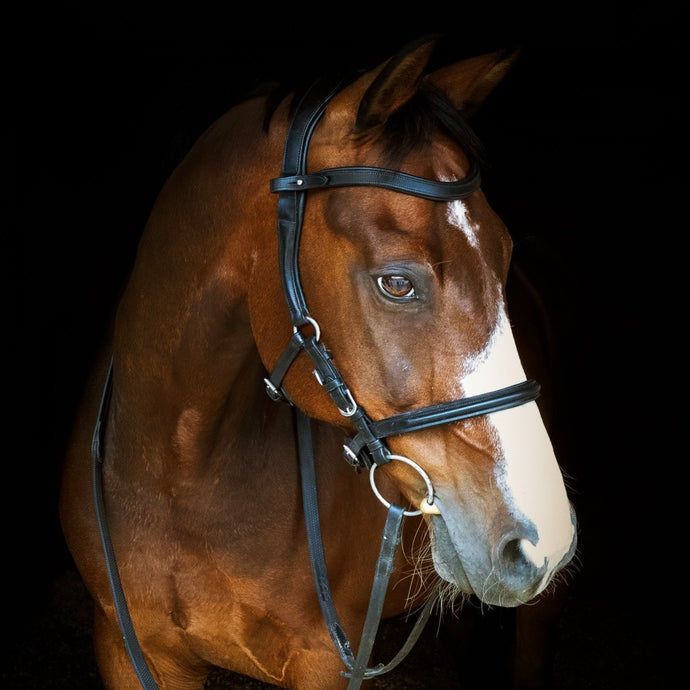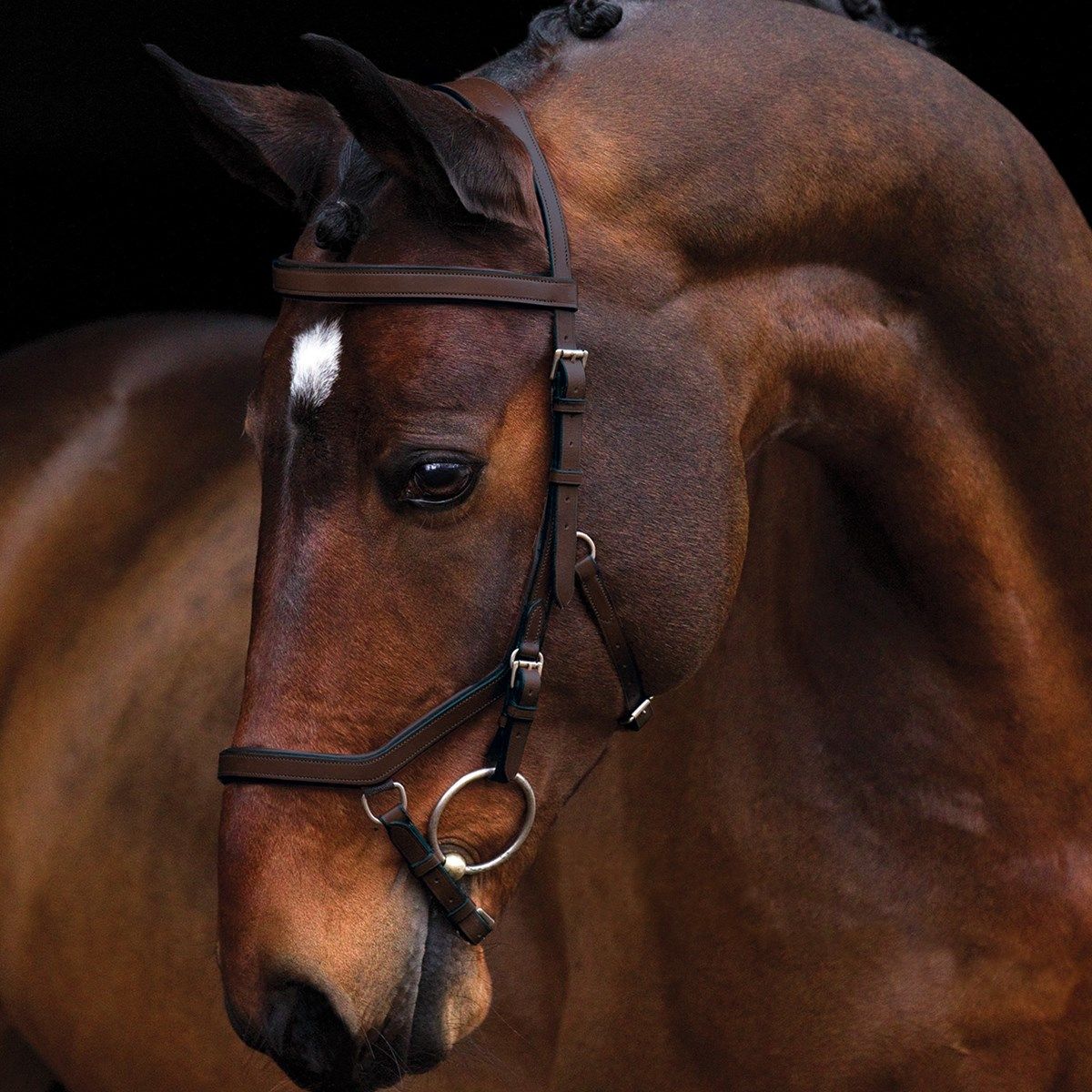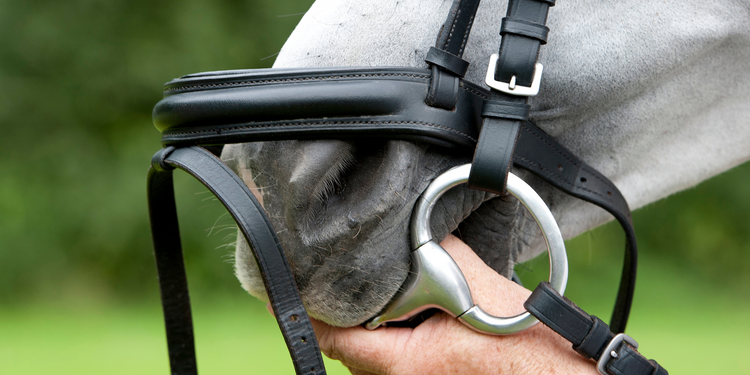Are Ergonomic Bridles Really Ergonomical for our Horses?
On December 7th 2022 British Dressage and FEI decided to ban the Quantum Bridle from competition. The ruling stated...
“The noseband and cheekpiece are linked on both the snaffle and the double, and the bit does not have an independent action, so when tension is placed on the rein, and the bit is brought into action, the noseband is pulled onto the nasal bone of the horse”.
The Quantum Bridle has been designed with equine welfare in mind, but I do believe any bridle that does not allow independent action of the bit should be a cause for concern as any tension on the bit will incur pressure on the nasal plane as well. Constant pressure on this area over time causes marks to the horses nasal bone and permanent damage.

This brought to mind other bridles currently on the market that are deemed FEI competition legal, however, in my opinion, do not allow independent action of the bit. Bridles including the Micklem or PS of Sweden Nirak bridles have bit straps that are connected to the noseband. When tension is applied to the bit, the noseband also engages due to the bit strap being attached to it.
Looking to science, there are published studies on the design of nosebands, however there are few published research on noseband pressure.
In one study, on the design and pressure of the Fairfax bridle compared to a ‘standard cavesson bridle’ (Murray et al., 2015), it was found that the Fairfax bridle produced far less pressure on the horse and consequently improved the horse’s movement. However, my concern over this study is the lack of control measure over the tightness of the noseband. The article stated the noseband was “adjusted to the tightness usually used by the rider.” but fails to define what "usual tightness" is. This leads to a risk of loosening the Fairfax bridle and tightening the “normal” bridle to alter the results in favour of Fairfax. I reached out to Fairfax for comment and they did not respond.


In another paper investigating the pressures under a crank noseband (Casey et al., 2013), it was found that if the pressures under the noseband were applied to humans, it would cause nerve damage.
The bridle was tightened to the standard “two fingers” under the noseband rule and the horse was monitored completing three activities: eating hay, eating concentrates, and being asked to step back. Eating hay was shown to be higher in pressure on the noseband than eating concentrates. Interestingly the initial ask for step back (back-up) showed a peak pressure on the noseband as the horse was not familiar with the step back instruction. Once the horse became familiar with it, the step back activity under the noseband pressure, was the same as normal mouth action i.e. far less than the other activities.
In another study (Robinson & Bye, 2021) looking to compare pressures under a standard cavesson bitted bridle, a cross-under bitless and a side-pull bitless bridle, showed some interesting results...
The standard cavesson bitted bridle had the lowest noseband pressure of the three bridles.
The side pull bitless bridle showed the highest pressure, that with sustained use could cause tissue damage, and therefore was deemed to be used carefully by professionals only.
The cross under bridle showed more avoidance behaviours from the horse than the other bridles.
In knowing that a standard cavesson bridle had lower noseband pressure and less avoidance behaviours in the horse than a bitless bridle, it demonstrates that bridles that do not engage the noseband appear to be kinder to the horse. From the earlier study that even when the horse was familiar with a step back ask (and therefore rein tension was applied) there was still less pressure under the noseband on a standard cavesson bridle compared to the other activities.
It can be argued that any bridle that does not allow full independent movement of the bit can be seen as causing pressures to the nasal plane of the horse.
Noseband practices of owners and riders are still falling below welfare standards.
The FEI rulebook states “At any level of Competition, a noseband may never be so tightly fixed that it causes harm to the Horse and must be checked as per the Stewards Manual noseband protocol.” Yet it can be found in a study investigating the noseband tightness levels in competition horses (Doherty et al., 2016), that 44% of the 737 horses checked had a noseband tightness of zero fingers. This is almost half the horses checked from both national and international competition.
The market is flooded with bridles that claim to be better for our horses but with little to no scientific evidence to support it. Noseband design needs to be further researched along with a need for a shift in owners and riders behaviour around noseband tightness, to better the welfare for our horses.
References
Casey, V. et al. (2013) “A preliminary report on estimating the pressures exerted by a crank noseband in the horse,” Journal of Veterinary Behavior, 8(6), pp. 479–484. Available at: https://doi.org/10.1016/j.jveb.2013.06.003.
Doherty, O. et al. (2016) “An investigation into noseband tightness levels on competition horses,” Journal of Veterinary Behavior, 15, p. 83. Available at: https://doi.org/10.1016/j.jveb.2016.08.026.
Murray, R. et al. (2015) “A bridle designed to avoid peak pressure locations under the headpiece and noseband is associated with more uniform pressure and increased carpal and tarsal flexion, compared with the horse's usual bridle,” Journal of Equine Veterinary Science, 35(11-12), pp. 947–955. Available at: https://doi.org/10.1016/j.jevs.2015.08.023.
Robinson, N. and Bye, T.L. (2021) “Noseband and poll pressures underneath bitted and bitless bridles and the effects on equine locomotion,” Journal of Veterinary Behavior, 44, pp. 18–24. Available at: https://doi.org/10.1016/j.jveb.2021.05.002.





